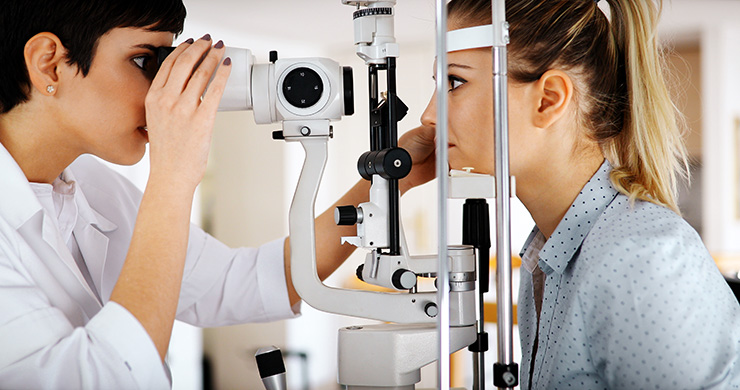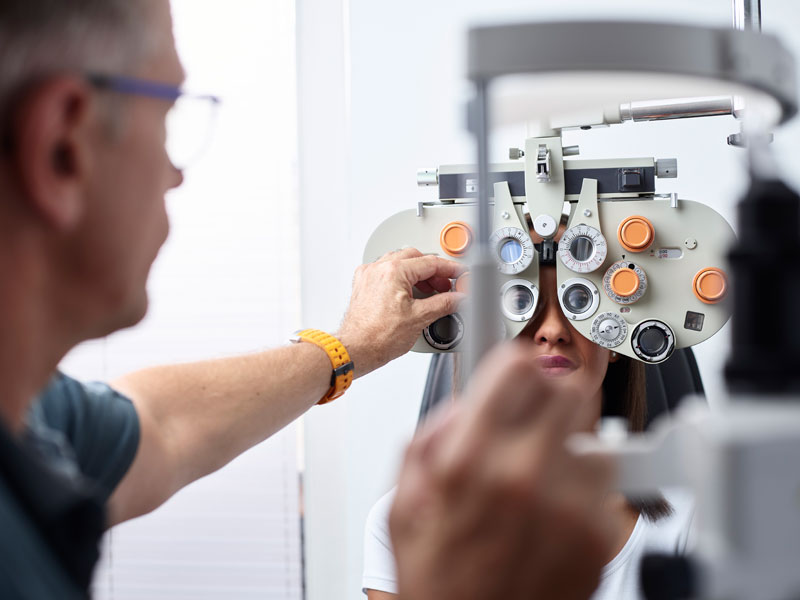Locate a Trusted Optometrist Chino for Household Eye Treatment Solutions
Discovering the current Technological Improvements in Optometry and What They Mean for Optometrists
From the precision of Optical Coherence Tomography to the nuanced insights provided by AI-driven analysis devices, these innovations are setting brand-new criteria in patient evaluation and treatment. As these advancements penetrate the method, optometrists are faced with the challenge of welcoming these tools to improve person end results.
Innovations in Diagnostic Devices
Advancing the field of optometry, advancements in analysis devices have actually changed the way eye care experts analyze and diagnose eye problems and aesthetic impairments. The past years has actually seen significant technical advancements, enabling even more exact and extensive examinations. Optical Comprehensibility Tomography (OCT), for instance, provides high-resolution cross-sectional pictures of the retina, permitting the early detection of illness such as glaucoma and age-related macular degeneration. This non-invasive imaging method has become essential in contemporary optometric practice.
An additional secret development is the intro of sophisticated corneal topography systems, which map the surface area curvature of the cornea with accuracy. These tools are particularly helpful for suitable contact lenses and diagnosing corneal conditions. Digital retinal imaging has actually transformed typical ophthalmoscopy, offering in-depth, breathtaking sights of the retina that promote thorough aesthetic exams.
The advancement of wavefront aberrometry has likewise been crucial, making it possible for the analysis of refractive mistakes with unparalleled accuracy (Eye Doctor Optometrist). This technology aids in personalizing restorative lenses and boosting medical outcomes for refractive surgical treatments. Collectively, these analysis improvements equip eye doctors to deliver remarkable person treatment, ensuring early treatment and tailored therapy strategies, ultimately boosting visual wellness outcomes
AI in Person Management
Structure on the structure of sophisticated analysis tools, the incorporation of fabricated knowledge (AI) in person administration stands for a transformative leap for optometry. AI systems are increasingly employed to enhance effectiveness, accuracy, and customization in client care. By evaluating vast amounts of information, AI can identify patterns and anticipate possible eye problems, making it possible for optometrists to customize interventions better. This capacity is crucial in handling chronic eye conditions such as glaucoma and diabetic retinopathy, where early discovery and continuous tracking are essential.
Moreover, AI-driven platforms assist in structured person communications and management procedures. Automated scheduling, virtual consultations, and individualized follow-up strategies not just enhance person fulfillment but likewise enhance time administration for practitioners. These systems can triage people based upon the seriousness of their conditions, guaranteeing that those in important need obtain timely focus.
In addition, AI boosts decision-making by giving eye doctors with evidence-based referrals and therapy pathways. By incorporating information from electronic wellness records, AI devices provide insights that notify medical choices, decreasing the risk of errors and enhancing client results. As AI remains to advance, its function in individual management will likely increase, reshaping the landscape of optometric care.
Advances in Retinal Imaging
In the world of optometry, retinal imaging has actually experienced remarkable technical innovations that are improving diagnostic abilities and individual treatment. Developments such as Optical Comprehensibility Tomography (OCT) and fundus digital photography have changed how optometrists assess the retina and envision.
Enhanced imaging modalities like OCT angiography are additional refining analysis accuracy. This non-invasive technique maps blood circulation in the retina, supplying important understandings into vascular health and wellness without the need for color shots. Furthermore, flexible optics technology is being incorporated right into retinal imaging systems to remedy eye aberrations, supplying extraordinary photo clarity. Such improvements help with the identification of minute retinal changes that can signify condition progression.
Furthermore, developments in man-made knowledge are augmenting retinal imaging by making it possible for automatic evaluation of big datasets. These systems aid optometrists in recognizing patterns indicative of pathology, consequently improving diagnostic accuracy and performance. Jointly, these advancements are changing retinal imaging into a cornerstone of contemporary eye treatment, improving end results and increasing restorative possibilities.
Teleoptometry's Growing Duty
Teleoptometry is progressively coming to be a vital part of eye treatment, driven by innovations in data and analysis tools. As optometry welcomes digital improvement, teleoptometry promotes remote consultations, allowing eye doctors to extend their solutions past standard boundaries. This is especially helpful in rural and underserved locations where accessibility to specialized eye care is frequently restricted. By leveraging high-resolution video clip conferencing and advanced retinal imaging, eye doctors can conduct extensive eye examinations from afar, making sure timely diagnosis and treatment.
The assimilation of synthetic knowledge (AI) additional improves teleoptometry, making it possible for the evaluation of aesthetic information and aiding in the discovery of ocular problems such as glaucoma and diabetic person retinopathy. AI-powered formulas can rapidly interpret complex imaging data, giving eye doctors with useful understandings that bolster scientific decision-making.
Furthermore, teleoptometry sustains connection of treatment through seamless combination with electronic health and wellness records (EHRs), allowing eye doctors to preserve extensive patient histories. This makes sure that people receive constant and tailored care even when seeking advice from with various experts.
Despite these advantages, difficulties continue to be, consisting of ensuring data protection and managing patient expectations. Teleoptometry stands for a substantial stride in the direction of more accessible, efficient, and patient-centered eye treatment. As technology evolves, its duty is positioned to my explanation broaden even more.

Future Fads in Eye Care
A myriad of innovative patterns is established to improve the future of eye treatment, driven by technical improvements and the evolving requirements of patients. One significant trend is the integration of man-made knowledge (AI) in diagnostics, which guarantees to enhance the accuracy and effectiveness of eye evaluations. AI algorithms can examine substantial quantities of information from retinal images, possibly finding problems like diabetic retinopathy and glaucoma earlier than conventional approaches.
Moreover, customized medication is gaining traction in optometry, with genetic testing notifying tailored treatment strategies. This approach intends to optimize person outcomes by customizing interventions to specific hereditary accounts. Wearable technology, such as wise call lenses, is likewise coming up, supplying real-time surveillance go of intraocular pressure or sugar degrees, thus providing continual understandings right into eye and systemic health and wellness.
The fostering of augmented fact (AR) and digital truth (VR) in training and individual education is one more emerging fad. These technologies use immersive experiences click for more info that can improve understanding and abilities both for individuals and eye doctors. As these fads evolve, optometrists must remain abreast of technical improvements to provide cutting-edge treatment, guaranteeing enhanced client results and fulfillment in the dynamic landscape of eye care.
Conclusion

Collectively, these diagnostic innovations empower optometrists to provide exceptional person treatment, making certain very early intervention and tailored treatment techniques, ultimately enhancing visual wellness outcomes.

As these technologies continue to advance, eye doctors must adjust and include them into method, ultimately enhancing process effectiveness and raising the requirement of eye care delivered to patients.